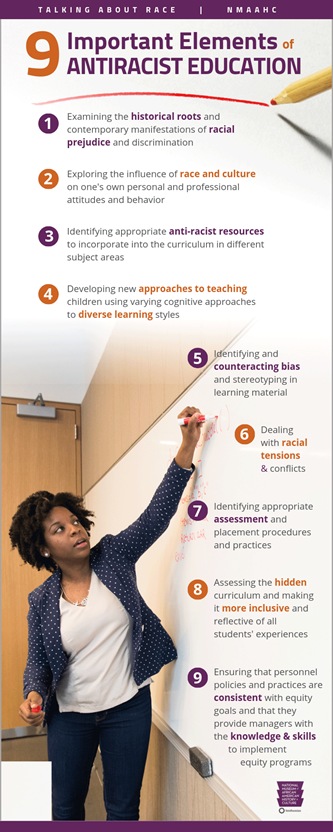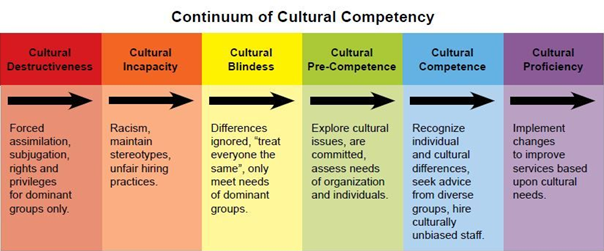“It’s late but it’s not too late.”
That is what I found myself saying when I was leading the last day of Zoom assembly for my school this past spring. We had decided to celebrate Juneteenth by playing the BrainPOP video about Juneteenth and announcing that President Biden had just made it a federal holiday.
A student asked a great question:
“Why did they wait until now to make Juneteenth a federal holiday?”
This led to a discussion of the Black Lives Matter movement and the impetus that it has given toward recognizing systematic racism not just in police departments, but also in our government policies, schools, businesses, and communities.
My reflection was sincere, yet said as a white person, feeling responsible for being part of systematic racism. I have contributed, albeit unknowingly, to that system, even as a music teacher and children’s singer/songwriter. Not only have I included songs in my music lessons that I hadn’t known were part of racist minstrel performances, for a much of my career, I also depended on a music curriculum that very much emphasized Western European music history. Did I also wait too long before taking action?
I have no qualification to say there is hope for the future. I have done my best to learn to do better over the years, but I’m not sure I have the best solutions. Although I’m hopeful, I’m not sure the actions I list below to dismantle systematic racism by amplifying Black voices in the music classroom are the best actions to take.
It is logical, however, that the more we decide to take the time to reflect on the parts we play to contribute to systematic racism, the more we will, collectively, be able to identify injustices that exist for our students and families. The more we communicate to others about the problems we see and possible solutions, the more we’ll be able to collaborate toward the “best” solutions. The more we act to implement these solutions, the better chance we’ll have of making change. It’s late to be acting on behalf of the Black children and families we serve, but it’s not too late!
Why Amplify Black Voices?
By amplifying Black voices in the music classroom, teachers can help cultivate students’ awareness, appreciation, and celebration of the beauty and perspective represented by Black voices.
Representation of Black voices in music benefits all students and indicates to them that Black voices matter. They are significant and valuable components of diverse humanity in all its forms and emotions.
Amplifying Black voices in the music classroom is a way to practice antiracism, defined in Ibram X. Kendi’s book, How to Be an Antiracist, as “one who is supporting an antiracist policy through their actions or expressing an antiracist idea.” The idea that minority voices, especially Black voices, should be amplified and celebrated is antiracist.
Next step? Take action!
How Can I Take Action?
To help with this section, I’ll refer to the graphic from the National Museum of African American History and Culture, which details elements of antiracist education.
1 When I “examine the historical roots and contemporary manifestations of racial prejudice and discrimination,” what strikes me is the way our communities and schools continue to segregate by race, despite policy. This de facto segregation results from racial prejudice—historic unfair housing, employment, profiling, and voting policies.
To Do:
- Teach or volunteer for schools and organizations that serve communities resulting from this de facto segregation.
- Be aware that minority students, especially in predominantly white classrooms, are at risk for racism at school and within the community.
- If applicable, be aware of your upbringing in a society entrenched in systematic racism. What history did your school fail to teach you? Educate yourself! Not sure where to start? Start with this helpful resource from Ben & Jerry’s!
- Pass on this history to students in relevant, age-appropriate ways. Be genuine and unequivocal. Do not hold back facts based on the age of students or your bias of whether they’ll be able to understand. At the same time, try to present the information in a way that makes sense to them. Songs are perfect vehicles to provide context and understanding.
 Image from: https://nmaahc.si.edu/learn/talking-about-race/topics/being-antiracist
Image from: https://nmaahc.si.edu/learn/talking-about-race/topics/being-antiracist
2 Look within to examine your attitudes and behavior. How do race and culture influence you? Race, culture, and music are intertwined and inseparable. Modeling attitudes and behavior that address and highlight this connection empowers students to start to make connections as well.
If our students and families see us taking opportunities to be inclusive of Black voices and addressing the lack of fair representation or recognition of Black voices in our music curriculum and community, they are more likely to value and mimic this behavior.
To Do:
- Think—how can you best model positive attitudes and behaviors around race and culture when you present music to children? Consider assessing your experience and comfort level—how authentic can you be in your actions to help amplify Black voices?
- Consider reading So You Want to Talk About Race, by Ijeoma Oluo, a great introduction to talking about race in considerate and constructive ways.
3 To “identify appropriate antiracist resources” for music education, you may need to get creative—it’s a fairly new concept! Be prepared to try new things and especially to let go of old folk songs that you didn’t know were actually manifestations of historical racism.
To Do:
4 Have you differentiated your teaching and classroom management to reach the students you serve? Positive Behavior Interventions and Support (PBIS) is a method I have seen work very well, even with very difficult behaviors. It’s basically accentuating and rewarding, as well as modeling, positive, prosocial behavior. Diverse learning styles include students that thrive on movement and repetition—these are needs that can be easily met in the music classroom.
To Do:
- Develop a rapport with your students—learn who they are and how to best communicate with them. Practice PBIS and create a safe, positive learning environment.
- If you have students with special needs in your classroom, consult with their special education teacher or read their IEP to learn how to best accommodate their needs. In addition, based on your own observations, discover how to connect with each student through music.
5 Counteracting bias in learning material includes being more intentional about how much diversity students experience in music class—that means amplifying Black voices and images. Do you love to decorate your room? Change your displays to feature Black artists!
To Do:
6 This year, to help students process racial tensions and conflicts, my school organized special workshops on social justice. As educators, along with families, it’s our responsibility to help students process what’s going on in society. Consider ways you can do that in the music classroom or in collaboration with other educators.
To Do:
7 Assessment and placement procedures happen outside the music classroom, but music teachers can help students who are marginalized by assessments such as these to feel successful and valued as members of the classroom community.
To Do:
- Find ways for everyone to participate in music class. Emphasize the power of teamwork and express how everyone is a valued member of the group.
- Consider music class a valuable place to boost socioemotional learning—something that isn’t usually assessed but is just as important as academics!
8 Amplifying Black voices in the music classroom interrupts the hidden music curriculum that places a high value on classical Western European traditions. Black voices were an integral part of the development of American popular music. More and more resources are available to highlight Black artists in music history.
To Do:
- In your classroom, give more airtime to age-appropriate songs from the R&B, hip-hop, funk, jazz, calypso, rap, Motown, reggae, go-go, and global genres, just like WEENation Radio.
- Check out this resource on Black artists in American music history available through Teach Rock.
- Consider featuring the role of music in African American history. Here’s my resource on Music of the Civil Rights Era.
9 Identify your equity goals, both for your practice as a music professional and for the children and families you serve. For example, would you like to create a safe space for students and families? Create an action plan for how: Will you be more careful about your song choices? Will you try learning how to relate to different experiences and backgrounds? How will you do that and still be authentic to your own experience? If you’re not sure, seek out helpful books, workshops, or professional development.
To Do:
- If you are a music professional or organization with an online presence, display your equity goals in a prominent online location.
- Members of the children’s music community offer workshops for educators working toward equity goals. Coordinate with your school or educator community to book them! Alphabet Rockers, Culture Queen, and Uncle Devin are some of the many artists who offer workshops.
 Image from https://www.camft.org/Portals/0/PDFs/Chapters/Diversity.pdf?ver=2020-02-20-180508-860
Image from https://www.camft.org/Portals/0/PDFs/Chapters/Diversity.pdf?ver=2020-02-20-180508-860
Conclusion
Be a change agent! If you work for or with schools, educator organizations, or even within the children’s music community, inquire about and advocate for diversity committee work. This way, you can collaborate with other educators to help children receive unbiased music education that celebrates diversity—especially by amplifying Black voices in the music classroom! Refer to the helpful graphic that guides schools and organizations toward becoming culturally proficient. The key word defining the final stage, cultural proficiency, is implement. Take action to improve how you serve Black children and families!
Many thanks to Devin Walker for reviewing this article and providing suggestions!